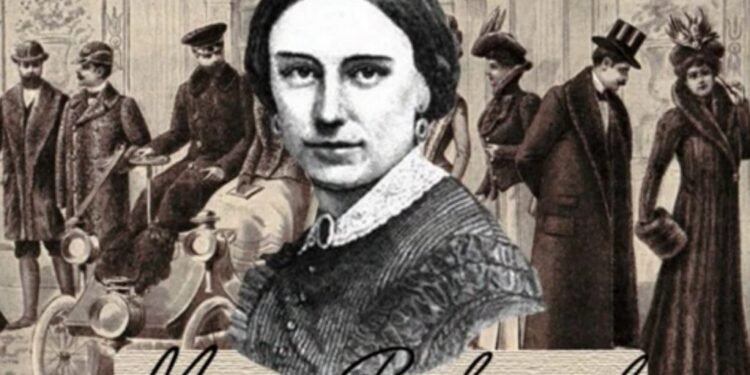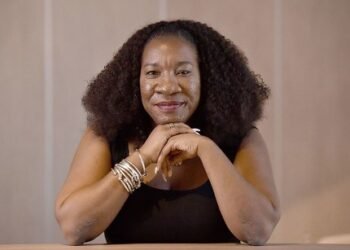One striking fact: a single practitioner’s manuals helped shape an entire profession across decades. mary ellen richmond transformed charity into a disciplined field and left a blueprint for modern social work.
Born in 1861 and active until 1928, her early life shaped a drive to study poverty and systems. Raised by a reform-minded grandmother, she moved from friendly visiting to systematic casework.
Her ideas pushed agencies to evaluate the person in context, keep records, and collaborate across services. Those methods turned informal help into a recognized work profession.
She led organizations in Baltimore, Philadelphia, and New York, wrote cornerstone texts, and campaigned for child labor laws, compulsory education, and juvenile courts. Her role in social welfare history and the history social work remains central to how practitioners train and practice today.
Key Takeaways
- Foundational figure: mary richmond codified social work practice.
- From charity to profession: she advanced systematic casework and records.
- Policy impact: reforms on child labor and education grew from casework insights.
- Lasting methods: assessment, documentation, and agency collaboration endure.
- Geographic reach: influence spanned Baltimore to york city and new york institutions.
Expert Roundup: How pioneers and practitioners interpret Richmond’s life, work, and enduring methods
Experts trace her reform instincts to a childhood where debate and civic purpose were regular dinner-table topics. This roundup gathers voices that link early context to later professional practice.
Early life influences that shaped a reformer
Scholars note that a home steeped in suffrage and social debate built the critical reasoning that guided her casework. Graduating at 16 and facing harsh publishing jobs in new york sharpened her awareness of labor precarity.
Church networks in Baltimore expanded her social capital and led to the Charity Organization Society, where she saw limits of untrained friendly visiting. Experts say that moment pushed her toward formalized training and applied philanthropy.
Why an expert roundup matters now
Today’s social workers find direct lines from her record-keeping and person-in-situation ideas to modern accountability and outcomes frameworks in new york city agencies. Practitioners emphasize that structured assessment, supervision, and ethical training protect both clients and workers.
Takeaway: revisiting her methods helps the social work profession map historical insights to evidence-based practice and equity goals in contemporary social welfare history.
From friendly visiting to Social Diagnosis: frameworks that professionalized social work
Voluntary visiting gave way to trained caseworkers who used records and research to steer relief. The Charity Organization Society pioneered intake, investigation, and coordinated aid. This shift created consistent standards for who received help and how agencies worked together.
Charity Organization Society roots
Early friendly visiting among volunteers focused on moral oversight. Under leadership in city COS branches, that model moved toward trained social casework. Supervisors, manuals, and paid workers replaced ad hoc visits.
Russell Sage Foundation, New York City
At the russell sage foundation in new york city, networks and record keeping scaled up. Standardized files and training improved referrals and research capacity across agencies.
Social Diagnosis and method
Social diagnosis (1917) framed the client as a person-in-situation and mapped environmental forces. The method listed six sources of power—household, personal, neighborhood, civil agencies, private agencies, and public bodies—to mobilize help.
Study of widows and practice texts
The study nine hundred eighty-five widows used case data to show needs and guide resources. Texts like The Good Neighbor in the Modern City and What Is Social Case Work? sharpened assessment, planning, and ethical urban practice.
Advocacy in action
Case records informed campaigns for compulsory education, child labor laws, juvenile courts, and legal protections for deserted wives. Documentation and shared standards foreshadowed modern supervision and quality improvement.

Mary Ellen Richmond
Scholars credit her push for formal training with turning ad hoc assistance into a teachable professional practice. Experts say that this shift made casework repeatable, testable, and open to improvement through supervision and curricula.

Expert perspectives on impact: building the social work profession, training pathways, and the role of caseworkers
Experts note that mary ellen richmond moved the field toward structured education. After her 1897 call for a training school, she taught applied philanthropy and helped shape early programs that anchored the social work profession in colleges and agencies.
In her model, caseworkers practiced disciplined assessment, documentation, and mobilization of supports. These methods equipped social workers to translate field records into advocacy and policy change.
Vocabulary and variations experts use
Scholars distinguish between the field and the method: social work as the broad field, social casework as the method, and social welfare as the policy ecosystem. Charity organization societies served as early coordinating bodies that tested these practices in community settings.
Beyond New York: diffusion and resources
With backing from the russell sage foundation, manuals, record frameworks, and research spread to other organization societies. Conferences, publications, and replicated training programs helped workers in many cities adopt consistent standards.
Experts also highlight her rise from a high school graduate at 16 to national leadership as a model of merit-based development in welfare history.
Conclusion
Conclusion — Mary Richmond changed scattered charity into a disciplined practice by defining social casework and linking records to reform. Her books, from Friendly Visiting among the Poor and The Good Neighbor in the Modern City to Social Diagnosis and A Study of Nine Hundred and Eighty-Five Widows, remain practical resources for social welfare and social work in New York and beyond.
Her insistence on training, supervision, and data-led methods shaped how workers learn and how agencies develop. Russell Sage partnerships in New York City showed how philanthropy, research, and practice can scale better outcomes. Remember her life arc (1861–1928) as a model of resilience for the social work profession and a prompt to keep integrating evidence, advocacy, and humane practice.
FAQ
Who pioneered early professional social casework and wrote Social Diagnosis?
A leading figure in early U.S. social work authored Social Diagnosis (1917) and helped standardize casework methods, assessment tools, and training for visiting workers in urban charity organizations.
What is the significance of friendly visiting in charity organization societies?
Friendly visiting paired trained workers with families to assess needs, track resources, and offer guidance. This practice laid the groundwork for systematic case records, ethical standards, and a professional approach to assisting the poor in cities like New York.
How did work at the Russell Sage Foundation influence social work practice?
Support from philanthropic institutions such as the Russell Sage Foundation promoted research, professional standards, and coordinated training. Their funding and networks helped scale record-keeping, evaluations, and dissemination of best practices across charity organization societies.
What is the “person-in-situation” concept from Social Diagnosis?
The person-in-situation perspective emphasizes assessing individuals within their family, community, and economic contexts. It directs caseworkers to consider social forces, relationships, and available resources rather than treating problems as isolated traits.
What were the “six sources of power” in Social Diagnosis?
The six sources of power are frameworks for evaluating a client’s strengths and potential: personal character, family, occupation, income, community institutions, and the state. Caseworkers used these categories to design practical, resource-based interventions.
What was the Study Nine Hundred Eighty-Five Widows and why does it matter?
The study examined nearly one thousand widows to identify patterns in family resources, employment, and welfare needs. Its data-driven findings informed policy debates, improved visiting practices, and contributed to the historical record of urban poor relief.
How did casework contribute to child labor and compulsory education reforms?
Caseworkers documented family circumstances and connected children to schools and legal advocates. Their field reports and advocacy supported reforms such as compulsory schooling, limits on child labor, and the establishment of juvenile courts.
What distinguishes social casework from other helping approaches?
Social casework focuses on individualized assessment, careful record-keeping, and coordinated referrals. It blends direct support with attention to social systems, differing from charity that relied solely on relief payments without structured evaluation.
How did visiting practices shape training for social workers?
Friendly visiting evolved into formal training programs that taught interviewing, assessment, record systems, and ethical standards. Training emphasized observation, documentation, and the use of local resources to support client plans.
In what ways did practice spread beyond New York?
Methods developed in New York and at major foundations were adopted by charity organization societies nationwide. Networks of associations, publications, and professional meetings helped disseminate casework techniques and training curricula.
What vocabulary do historians and practitioners use when discussing this reform era?
Common terms include social work, social casework, social welfare, charity organization societies, friendly visiting, visiting workers, and case records. These phrases capture both practice and institutional context during urban reform efforts.
How did visiting among the poor differ from general charity initiatives?
Visiting emphasized assessment, continuity, and empowerment through resource linkage. General charity often focused on short-term relief. Visiting aimed to address root causes and coordinate services for longer-term stability.
What role did data and record-keeping play in professionalization?
Systematic records enabled case comparisons, outcome tracking, and evidence-based recommendations. Data supported training, accountability, and the shift from voluntary almsgiving to organized social services.
How did practitioners balance advocacy with direct service?
Caseworkers combined individual aid with policy efforts—using case histories to argue for legal reforms, public programs, and institutional changes that addressed structural contributors to poverty.
Where can scholars find primary sources on early casework and visiting practices?
Key sources include organizational reports from charity societies, publications from the Russell Sage Foundation, period manuals on visiting, and contemporaneous studies of families and urban welfare systems.





